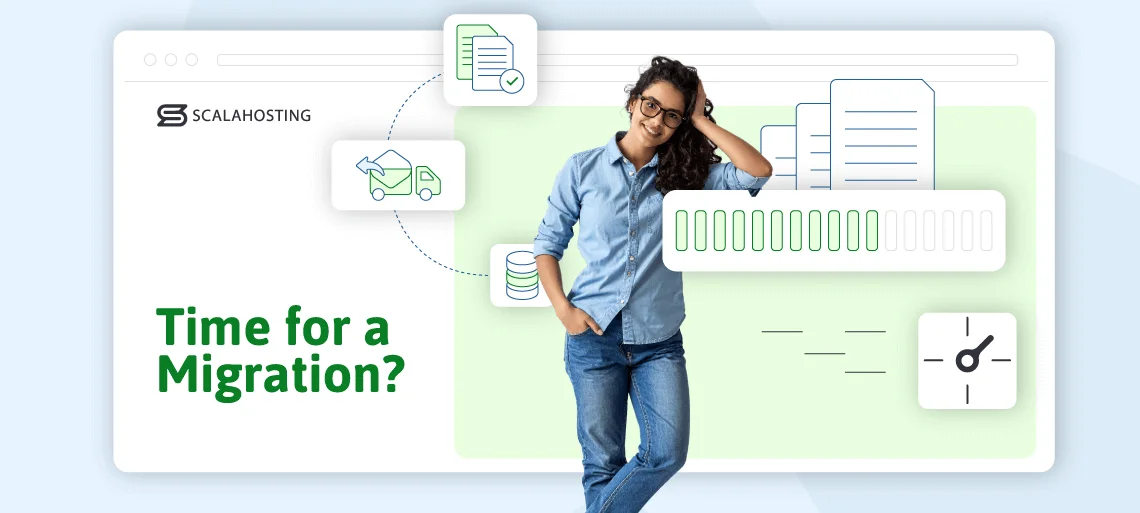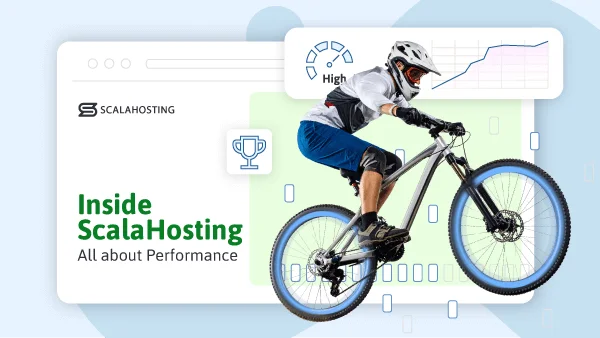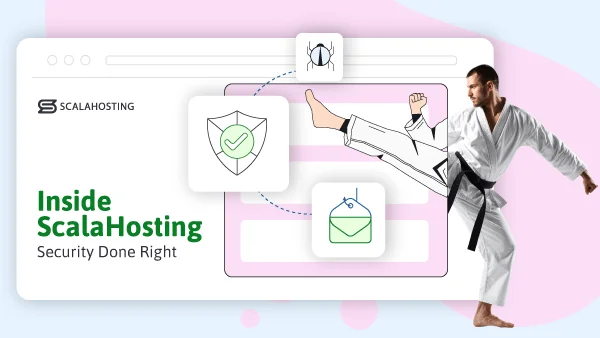Inside ScalaHosting: Site Migration Policies
Moving your website from one host to another is no longer a rare occurrence — it’s practically a rite of passage. Whether you’re chasing better performance, improved security, or more reliable support, the need for site migrations is growing fast. But while switching hosting providers sounds simple, the reality can be a maze of broken links, lost emails, and downtime headaches. Not to mention the hidden fees and offer limitations you can stumble with most hosts.
That’s where ScalaHosting flips the script.
Unlike most providers that charge a premium fee (or limit how many sites you can move), ScalaHosting offers free, unlimited website migrations — yes, unlimited. From your websites and emails to databases and configurations, we handle it all with expert precision, regardless of CMS and platform.
So what does this process look like from the inside? Let’s pull back the curtain and explore how ScalaHosting makes migrations feel less like a hassle… and more like a fresh start.
Signs You Might Need to Look for a New Provider

Web hosting is a saturated industry, with thousands of providers fighting for the same client pool. Users have so many choices that it’s not unlikely they don’t land the dream partner on the first try.
That’s not a big deal at all!
While it can certainly come with some minor inconveniences, switching to a different host is not as cumbersome as one might expect.
But how can we be sure that our current provider is not up to par with the highest standards? Quite a few ways, really.
- Hardware and software setup – starting a hosting company is child’s play nowadays. You can get a couple of servers, separate them into virtual instances, and start accommodating clients. Truly reliable hosts do this selection much more carefully. Top-tier data centers, optimized servers, and careful software configuration can do wonders in terms of speed and security.
- Slow performance – you can have a perfectly optimized website, but if your server or hosting plan is holding you back – there is not much you can do. Good hosts are flexible in their offerings and dedicate extra attention to maximizing your page loading speeds in any way possible.
- Downtimes – even a single unplanned downtime is one too many in the world of web hosting. Inactive pages scare clients away, and that can often be detrimental when growing an online project, especially an ecommerce one. If your hosting provider cannot guarantee at least a 99.9% uptime – maybe it’s time to look for a new one.
- Unreachable or unhelpful support – оne of the biggest problems in the industry is the sub-par support services that many hosts seem satisfied with. The issue worsens with the overarching use of chatbots and GPT-like tools, taking away the human side of web hosting. While a machine can probably help with basic questions and minor issues, getting real people to find working solutions for you is not just more efficient but more personal as well..
- Lack of features and upgrade options – when purchasing our first hosting plan, we often look for features and resources to satisfy our primary needs. While logical, once our project grows, we are left with insufficient plans. What’s worse is the lack of scalability – getting more from a single resource is usually impossible without upgrading the entire plan. It’s a good idea to pick a provider that will not only satisfy your current requirements but also align with your future demands.
- Limitations and hidden fees – many providers hide strict limitations in their Terms of Service, especially when it comes to shared hosting plans. The worst thing is that you’ll often fail to realize them until you hit a cap and have your account suspended. The perfect host will not only be transparent with their limitations but will also leave the client enough leeway to fix their issues or upgrade without any service interruptions.
Clients have so many great hosting providers to choose from that it doesn’t make any sense to stick with someone less than excellent.
But what should we do with our existing online project? Won’t moving it break our configuration or result in unexpected data loss?
Well, not if everything is done right…
Time for a Migration – What Can You Expect?
While people may have different expectations when it comes to how their website looks and performs, moving it is a fairly straightforward process for them. They only need:
- Full data transfer (site, configurations, emails, databases, SSL certificates, etc.)
- No downtimes or service interruptions
- No hidden fees and unexpected limitations
- Transparency and smooth communication with the host during the transfer
- Backups and rollback options as a safety net
Sounds so simple, yet many hosting providers struggle to ensure even the bare minimum to make users happy.
Here’s how top hosting providers compare on key website migration features:
| Provider | Free Site Migration? | Covers Non-WordPress? | Free Email Migration? |
|---|---|---|---|
| ScalaHosting | ✅ Any site, unlimited | ✅ Full accounts, any type | ✅ Fully technician-managed |
| Bluehost | ❌ Very limited, not really free | ❌ Requires paid TLV | ❌ Paid per mailbox |
| SiteGround | 1 WordPress site free via plugin | ❌ Require extra fee | ❌ cPanel only |
| Namecheap | ✅ Yes (full-site) | ✅ Across platforms (subject to account capacity) | ✔️ Basic w/ limits |
| DreamHost | Automated WordPress plugin | ❌ Non-Wordpress migrations are paid | ❌ DIY only |
| IONOS | ❌ DIY guides only | ❌ No automated migration | ❌ DIY only |
| Hosting.com | ✅ cPanel full-import | ❌ Manual only | ❌ cPanel only |
| GoDaddy | ❌ Self-serve variety | ❌ Tools/manual | ❌ Tools for IMAP/M365 |
| HostGator | VPS/Dedicated plan only | ❌ Require extra fee | ❌ Always paid per mailbox |
| Kinsta | ✅ Unlimited WordPress sites | ❌ Paid via partners | ❌ DIY only |
| WP Engine | Automated WordPress plugin | ❌ Manual only | ❌ DIY only |
| Hostinger | CMS-only, excludes configs | ❌ Partial (open-source CMS solutions) | ❌ DIY only |
The results paint a different reality compared to the expectations:
- Many site transfers were either limited to a single project or only provided tools for manual migration.
- When companies talk about “free site transfers,” they often refer to WordPress websites and cPanel-to-cPanel transfers only.
- Almost none of the researched companies offered email transfers
- There are often hidden caveats and conditions to take advantage of this service.
- Even if you get all your data transferred, any non-functional page or plugin must be diagnosed by yourself.
So, if we want to move multiple websites and non-WordPress projects, our options are pretty limited and depend on our own skills for a smooth transition?
Not if we have something to say about that!
The ScalaHosting Way: How We Handle Website Migrations

At ScalaHosting, we firmly believe that any user who moves from a different host should be accommodated quickly and with zero hassle. This means we fully assist with the transition without any IFs and BUTs.
It doesn’t matter if you’ve chosen a shared, reseller, or managed VPS plan – the Scala migrations are free, quick, and at a time of your choice.
This includes:
- Number of websites – whether you have 1 or 50 should make no difference.
- Current control panel – sure, it’s easy to migrate from the same panel, but that shouldn’t be an essential condition.
- Data size – big websites can take more time to transfer, but no one should be charged for utilizing more disk space than another.
- Site software – WordPress might be the most popular CMS, but millions of people choose other solutions to successfully create a site. They should be able to migrate just as easily.
- Data type – web hosting is a service that encompasses not only site files, but databases, emails, and many more. Transferring only a piece of that doesn’t make any sense.
We get why many other providers limit their site transfer services as they do. In times when everyone is trying to automate as many processes as possible and minimize client-operator interactions, at ScalaHosting, we carve our own path.
We don’t just want you to trust our Team, we encourage you to see for yourself why we think they’re so great. Humans are tribalistic beings, and we cherish every client contact and solved case. Here is how a typical site migration looks at ScalaHosting:
- Client signs up for a Scala account
- Requests a migration via ticketing or live chat
- Inputs their control panel URL and credentials (email hostname and credentials if it’s only an email migration)
- Specifies the desired time for the transfer
- Our technicians perform the migration as requested
- Once done, they check for errors and unexpected issues
- Client is notified of the successful data transfer
So, the next time you want to move a website to a different host – check us out and see what we have to offer. We promise it will be worth your while!
Final Takes
Every user is entitled to a first-class service, and the benefits of finding it are more than a few. Sure, not everyone will be lucky on the first attempt, but we shouldn’t be scared to try, worried that any transition might cause us to lose data, money, or time.
Any reputable host should be happy to take that burden off your shoulders, but how can you ensure that is the case? Here are some questions to help you:
- Will you migrate all websites on my account?
- Is email included in the migration?
- Will there be downtime, and how is DNS handled?
- Is there a limit to how much data you’ll move?
- What if I’m not using cPanel?
If your future provider ticks all the boxes for the site transfer – you have solid grounds to consider their offerings.


